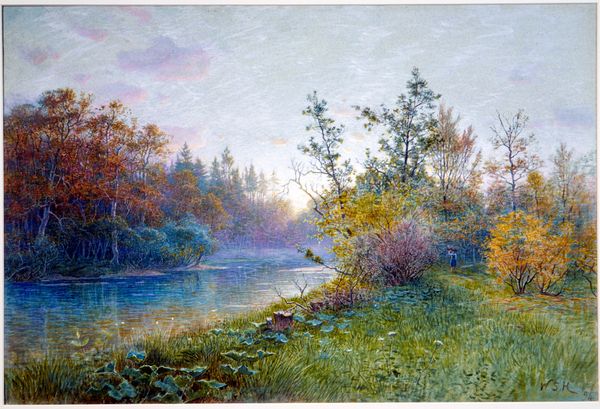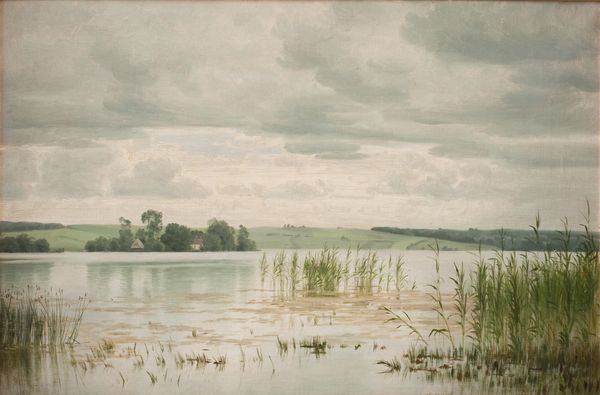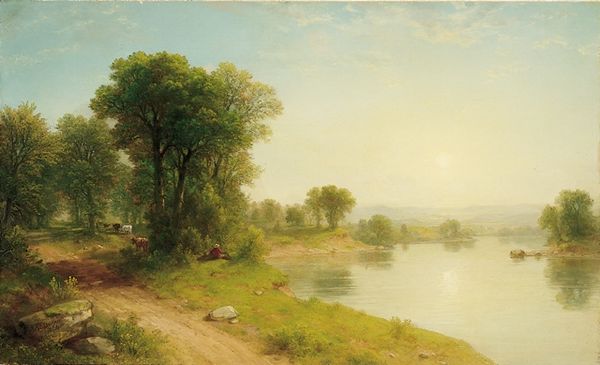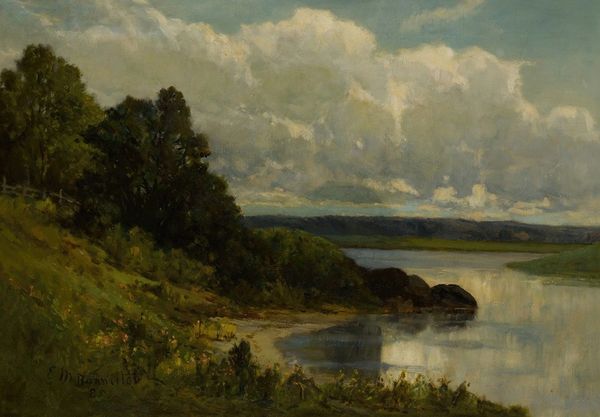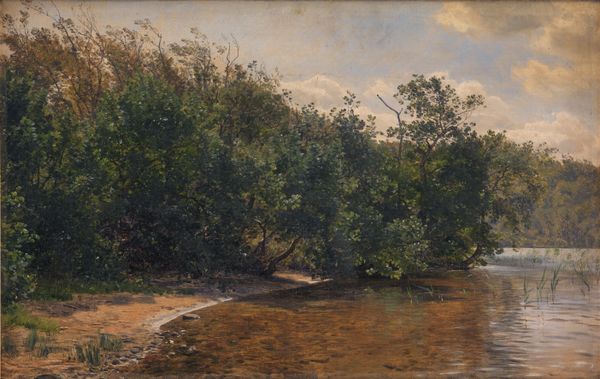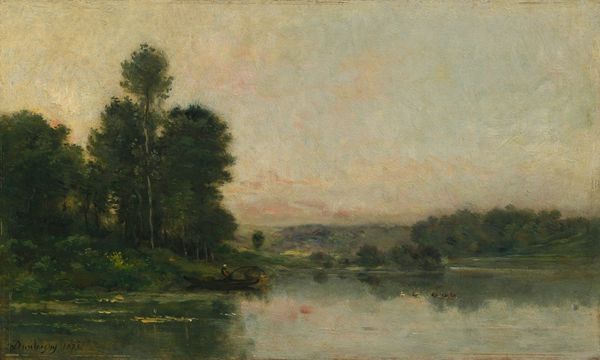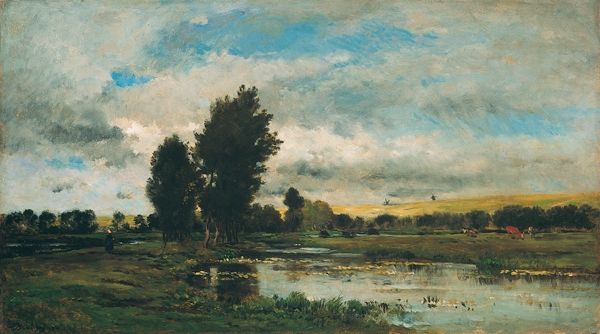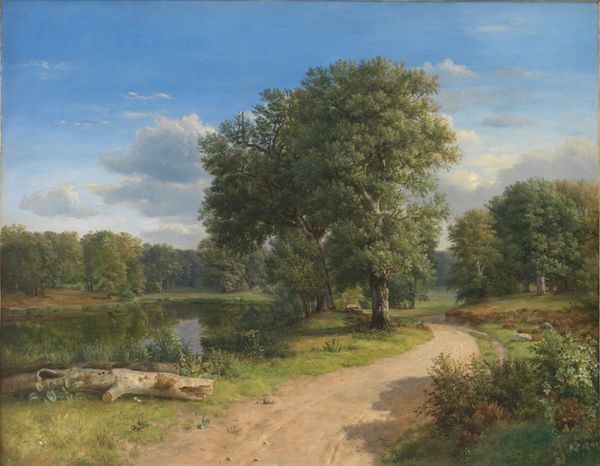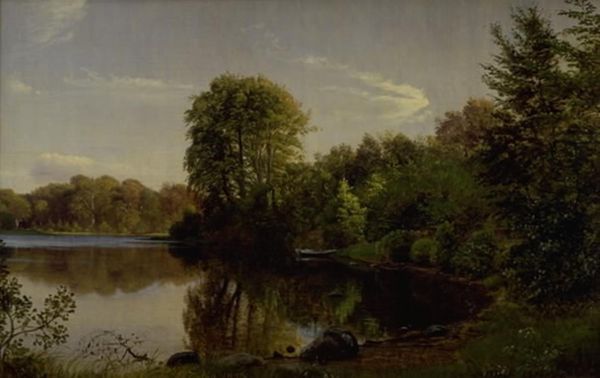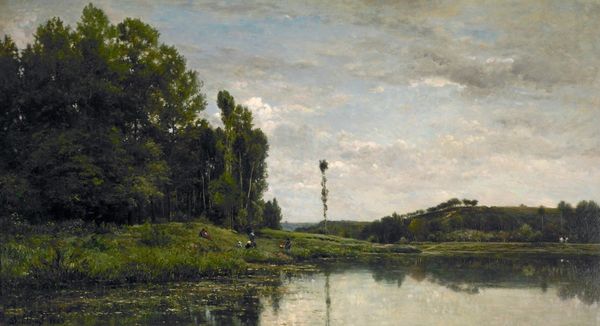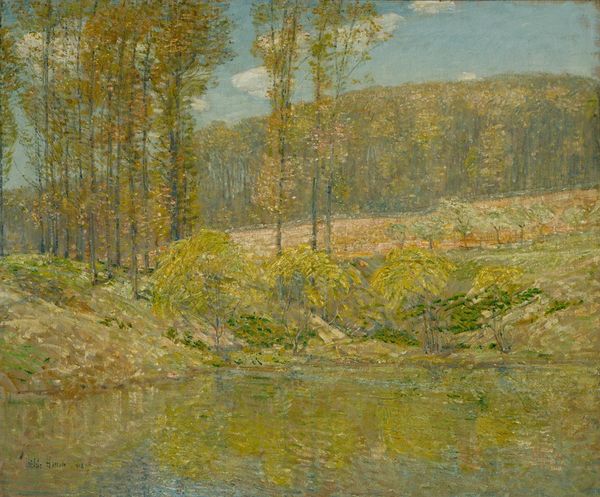
drawing, print, plein-air, paper, watercolor
#
drawing
#
water colours
# print
#
impressionism
#
plein-air
#
landscape
#
impressionist landscape
#
paper
#
oil painting
#
watercolor
#
watercolor
#
realism
Dimensions: 387 × 546 mm
Copyright: Public Domain
Curator: Welcome. Before us is Walter Launt Palmer’s “Lake at Appledale,” created in 1884. Palmer employed watercolor and possibly oil to capture this impressionistic landscape. Editor: There's an undeniable serenity to this piece, a sort of hushed stillness that permeates the scene. The cool blues and grays create a placid atmosphere. Curator: Indeed. Let’s consider how Palmer’s application of color constructs that very mood. The subtle gradations in the sky, transitioning from pale blue to muted grays, reveal an advanced understanding of atmospheric perspective. Observe, too, the layering. Editor: Speaking of process, I'm curious about Palmer's choice of materials. Working en plein air, did he opt for the portability of watercolor over oil's richer possibilities? Did the constraints of a quickly drying medium encourage the very qualities of immediacy and fleeting light we're responding to? Curator: A relevant point. This highlights how the materiality influences the aesthetics of impressionism. Palmer manipulates the washes to simulate light’s transient nature, encapsulating a specific moment. The surface tension creates a vibrant shimmering on the lake's surface. Editor: Exactly. And think about the labor embedded within this. "Plein-air" seems romantic, but it meant physically hauling materials, contending with weather, the very real physical demands. How did such material concerns influence artistic decisions in landscape painting at the time? Curator: That invites a deconstruction of the landscape genre itself. It's not just the depiction, but the tangible engagement, and a social condition is registered. These pieces served to display the wealth of natural resources and promote agrarianism as ideal. The image is carefully built on a framework that conveys not merely appearance, but intention. Editor: Ultimately, reflecting on Palmer's material choices and his immersive labor lets us delve into broader questions about landscape representation. How do art supplies shape the scene and experience we’re seeing before us? Curator: Very well put, highlighting the complex interplay between the artist's intention, technique, and material agency, inviting one to engage not merely with an image of "nature" but an active dialogue with all elements informing this artwork.
Comments
No comments
Be the first to comment and join the conversation on the ultimate creative platform.
